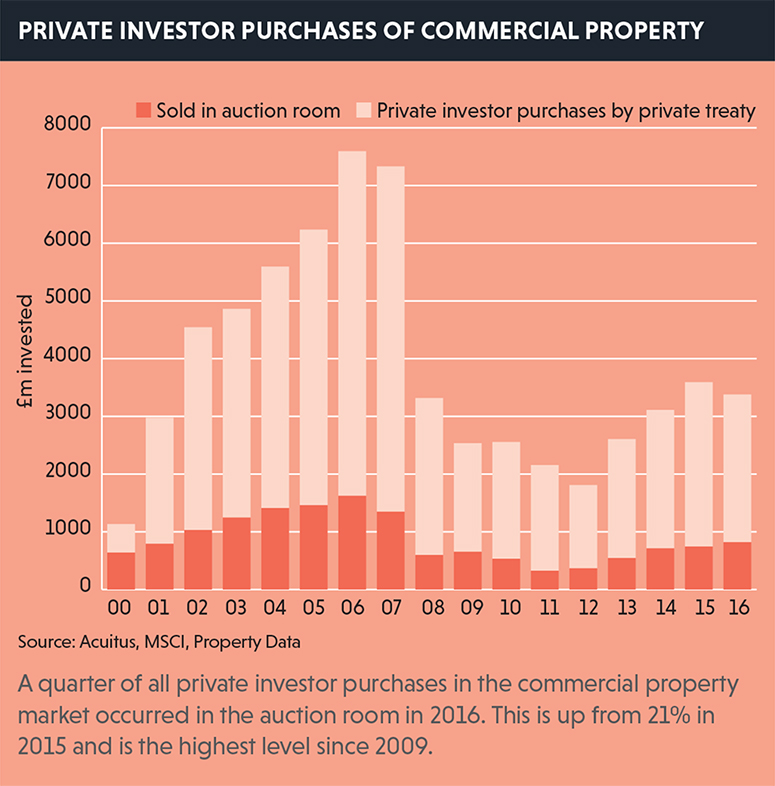The increasingly penal tax regime for residential investment property is prompting more investors to consider commercial property for the first time.
So what are the advantages and pitfalls associated with commercial lots compared with residential buy-to-lets?
Stamp duty
The rates of SDLT are lower for a commercial property and the 3% surcharge on second homes will not apply.
Furthermore, the non-residential rates also apply to mixed-use properties, so an investor could purchase a building with, say, retail units on the ground floor and flats above and still pay the non-residential rate of SDLT.
To give an example, purchasing a building for £750,000 would incur SDLT of £50,000 as a residential purchase (assuming the 3% surcharge applies) or £27,000 as non-residential (including mixed-use).
Length of lease
An assured shorthold tenancy is usually for 12 months and continues until either side serves a notice to terminate – and may be renewed. A commercial lease is often for a much longer term – such as two, three, five or 10 years. It may contain a break clause, but the longer term provides greater certainty, which enhances the value of the investment and assists in obtaining finance.
Rental income
Rent under an AST is usually paid monthly in advance. Under commercial leases, rents are usually paid quarterly in advance, which can greatly assist cash flow. Commercial leases for five years or more usually have rent reviews built in. This enhances not only the rental value of the property but also the capital value when the rent increases, providing greater capital growth and better yields.
An investor will usually buy a residential property with vacant possession and may have to refurbish it before letting it out, so there can be quite a time lag and some expense before rent is received.
Conversely, a commercial property is often purchased with a lease in place and a tenant already in occupation, so rental income is immediate.
Tenant
Although references are usually taken up prior to granting an AST, for a commercial lease far more detailed due diligence is carried out on the credit-worthiness and covenant strength of the tenant (such as looking at trading history).
Additional security can also be taken, such as a guarantor or a rent deposit, to fall back on if the tenant defaults.
Unlike a residential buy-to-let, the covenant strength of a commercial tenant can add to the value of the property, especially if it is a well-known name.
Also, if a tenant wishes to dispose of the premises during the term of the lease, it may assign it with the landlord’s consent, which will also be subject to approval of the proposed assignee’s financial standing.
Conversely, ASTs are usually non-assignable, so that when a residential tenant leaves, a new AST has to be entered into and there may be a void between the two tenancies.
Landlord’s responsibilities
An AST tenant usually has to pay council tax and utility bills, but all other costs of maintaining and repairing the premises fall on the landlord.
With commercial premises, often an “FRI lease” is granted – which means a full repairing and insuring lease, whereby the tenant pays for all repairs and the tenant also reimburses the cost of insuring the premises.
A commercial landlord seeks what is known as a “clear lease”, which means the landlord just collects the rent and all other expenses relating to the property fall to the tenant.
Furthermore, the landlord has far less responsibility to repair the premises, as this will be the responsibility of the tenant under the repair covenant. In the case of a lease of whole, the tenant may have to repair the whole building.
In a multi-let building, the tenant will repair its part and the landlord the common parts and structure. Overall, the landlord will have far fewer responsibilities and does not get called out every time the boiler breaks down.
Pitfalls
When commercial premises do fall vacant, it often takes longer to find a new tenant than with residential premises.
Also, if the commercial tenant becomes insolvent or disappears, the landlord is more likely to be exposed to greater rental arrears and it may take longer and be more costly to remove the tenant and/or forfeit the lease.
The documentation for a commercial lease is more complex, involving lengthier provisions relating to assignment, alterations, restrictions on use, rent review and other matters – and it therefore usually takes much longer between agreeing heads of terms and the new lease being completed and the tenant taking occupation.
As a result, the landlord may incur significant legal costs in making sure that the documents are in good order.
Often (depending on market conditions), when the landlord is granting a lease to a new tenant, the tenant will negotiate a rent-free period, creating a delay before the landlord receives any rental income.
It is far more important to ascertain that a commercial property has the correct planning title to ensure it is authorised to be used for its purpose, as there is a great variety of planning uses – such as retail, offices, restaurant, bar, industrial. Planning permissions and planning history need to be checked carefully.
Barry Shaw, real estate partner Wallace LLP
■ Read the full article in the summer issue of EG’s Property Auction Buyers’ Guide: in newsagents now or register for free digital access at http://forms.egi.co.uk/PropertyAuctionsGuide











